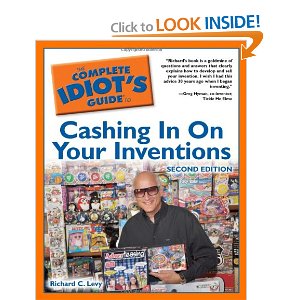Title: Brainstorming Invention Ideas: Unleashing Creative Potential
In the annals of human achievement, invention holds a special place as the wellspring from which all progress flows. From the wheel to the World Wide Web, inventors’ ideas have spurred our species forward, breaking barriers and redefining what’s possible. The birth of every invention begins with an idea. Brainstorming invention ideas, therefore, is a crucial step on the journey of innovation.
Understanding Brainstorming
Brainstorming is a technique aimed at problem-solving, encouraging free thinking to generate as many ideas as possible within a certain time frame. It is widely employed in various fields such as business, education, and scientific research.
The cornerstone of brainstorming lies in its non-judgmental nature, where even the most outlandish ideas can become a launchpad for viable, groundbreaking solutions. The technique thrives in an atmosphere of unrestrained creativity and open-mindedness, setting the stage for invention.
Preparing for Brainstorming
Before embarking on brainstorming invention ideas, it is important to define the problem that the invention will solve. This not only gives a direction but also allows for more focused brainstorming. A clear problem statement is like a lighthouse guiding the ship of imagination, preventing it from getting lost in the sea of possibilities.
Gathering a diverse group of people, each with unique perspectives, can be a great advantage. The clash of different thought processes often sparks novel ideas. Alternatively, if brainstorming alone, come prepared to let your thoughts wander and roam free.
Brainstorming Techniques
A variety of techniques can be employed when brainstorming invention ideas.
- Classic Brainstorming: This is the most common form, wherein participants are encouraged to think freely and voice any ideas that come to mind, irrespective of how feasible they might seem.
- Brainwriting: A variant of classic brainstorming, brainwriting involves writing down ideas instead of voicing them. This allows for uninterrupted thought flow and often leads to more ideas being generated.
- Mind Mapping: This visual tool organizes thoughts in a non-linear fashion, representing ideas, words, tasks, or other items linked to a central concept. Mind mapping can be particularly helpful in brainstorming complex ideas.
- SCAMPER: An acronym for Substitute, Combine, Adapt, Modify, Put to another use, Eliminate, Reverse, this method encourages thinking about a product or idea from different perspectives to generate innovative concepts.
- Six Thinking Hats: Developed by Edward de Bono, this method uses six different “hats” or modes of thinking (Information, Emotions, Critical, Optimistic, Creative, Process) to explore ideas from multiple angles.
From Brainstorming to Invention
Brainstorming can result in a deluge of ideas, but not all of them may be feasible or relevant. Thus, the next step is to filter and refine these ideas. Evaluation must be done carefully, not to stifle creativity but to identify the ideas with the greatest potential.
Prototyping and testing follow the refinement of ideas, turning the abstract into the tangible. Inventors should not be disheartened by failure at this stage; indeed, most successful inventions are the result of iterative processes where failure led to learning and improvement.
Finally, inventors should be ready to iterate their invention based on the feedback from the testing phase. This feedback loop often leads to further brainstorming and modification of the original idea, refining it to its most efficient and effective form.
Conclusion
Inventions don’t happen in a vacuum. They are the products of creative minds interacting with each other and their environment, propelled by the desire to solve problems and improve the world around them. Brain




 You have just created a brand new gadget, it’s innovative, extremely useful and everybody is dying for one. But before you can turn your new invention into millions of dollars, you need to protect it from being stolen by other would be millionaires. To do this you need a patent. But wait, you don’t have the small fortune that it sometimes takes to patent a new invention.
You have just created a brand new gadget, it’s innovative, extremely useful and everybody is dying for one. But before you can turn your new invention into millions of dollars, you need to protect it from being stolen by other would be millionaires. To do this you need a patent. But wait, you don’t have the small fortune that it sometimes takes to patent a new invention.
